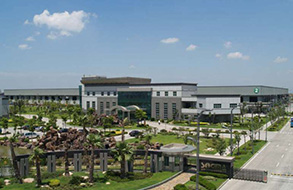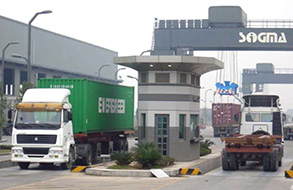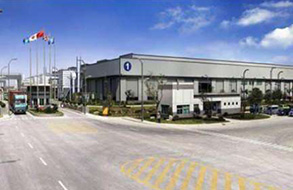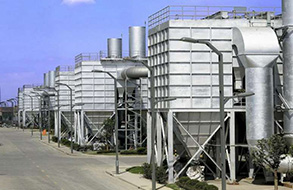Secondary aluminum alloy industry faces challenges and opportunities
----Interview with Li Hongwei
General Manager
Chengdu Sigma Nonferrous Metal Co., Ltd.
- The Sigma Group, founded in 1978, primarily focuses on smelting of secondary aluminum alloy and zinc alloy and the trading of metal scrap. Sigma has sizeable plants in Taiwan (Kaohsiung) and mainland China (Shanghai, Zhangzhou, Chongqing, Rizhao, Chengdu, and Changchun), with over 1,600 employees and annual turnover of RMB8.2 billion.
- Asian Metal: Hello, Mr. Li! Thank you for accepting the interview with Asian Metal. Would you please give a brief introduction to your company?
- Mr. Li: Chengdu Sigma Nonferrous Metal Co., Ltd. was founded on January 14, 2015 and engages in the production of aluminum alloy needed for pre-casting process, mainly producing aluminum liquid.
- Asian Metal: For secondary aluminum alloy producers, a great majority of customers are from automobile industry which, however, suffered from sluggishness this year. Does this have any impact on secondary aluminum alloy plants?
- Mr. Li: The secondary aluminum alloy industry usually witnesses strong demand from late August as the automobile industry enters the peak season in September and October, the "Golden Time" for business. However, the automobile market has seen no significant improvement as of late September this year and the demand for secondary aluminum alloy starts to weaken on the whole. However, the impacts are also structure-based. For example, top auto manufactures like Volkswagen and General Motors are less affected, so their demand shows no sharp decline; but some small-to-medium auto makers, especially those who experienced sharp decline in sales, are more affected. Accordingly, secondary aluminum alloy plants would be less affected if they produce for top brand manufacturers, and those who supply raw material to less famous car companies will likely be more affected.

- Asian Metal: Do you think the ongoing popularization of new energy vehicle will have any impact on secondary aluminum alloy industry?
- Mr. Li: Firstly, the popularization of new energy vehicle will lead to higher consumption of aluminum. However, there is no acknowledged standard yet about which part of the new energy vehicle will consume more aluminum during production, because no unified specification has been set for new energy vehicle parts. Differences do exist among auto makers. For example, there is no set standard on which part will be removed eventually and be replaced with what part. So, we don't have specific criteria to evaluate these impacts on secondary aluminum alloy industry. Secondly, even though some aluminum alloy parts were eliminated during the popularization of new energy vehicle, they could be used in other products due to the material advantage of secondary aluminum alloy. There are still places for secondary aluminum alloy in newly-emerging markets, as well as huge potential for development.

- Asian Metal: What are the advantages for secondary aluminum alloy producers in Chongqing compared with those in other regions in China?
- Mr. Li: Firstly, the cost of natural gas is 1/3 lower in Chongqing than that in southeastern coastal areas. Secondly, Chongqing government provides greater support for local enterprises and over 90% of secondary aluminum alloy companies enjoy welfare benefits and tax refund policy. Currently, the tax refund for each disabled employee is around RMB70,000 (USD10,168) per year, about four times the average social wage, based on the number of disabled employee in the company.
- Asian Metal: This year still witnesses strict environmental protection policy. What impacts from this policy will have on your company?
- Mr. Li: I believe the environmental protection has little impact on us now as we act strictly in line with the policy and all environmental equipment installed meet state requirements. In addition, we are granted with all environmental protection licenses. Large-sized secondary aluminum alloy producers in Chongqing meet all requirements concerning the environmental protection.
- Asian Metal: The secondary aluminum alloy market became sluggish starting from this April. What's your opinion on the market situation in Q4 2018?
- Mr. Li: Based on previous experience, the last four months of the year are the "Golden Time" for the market. However, the situation is a bit different this year. On one hand, the U.S.-China trade war led to decrease in exports, which exerted negative impacts on the economy and caused panic in the market. On the other hand, China's consumption of the material also decreased this year compared with last year. These two factors together had certain impacts on the secondary aluminum alloy industry. It is expected that the industry would still face the risk of being affected in the fourth quarter and thus would see slower growth year on year.
- Asian Metal: What's your opinion on the impact from U.S.-China trade war on secondary aluminum alloy industry?
- Mr. Li: The U.S.-China trade war has had no direct impact on this industry so far. Secondary aluminum alloy is mainly used as a raw material, while the U.S.-China trade tariffs are mainly for finished products. However, the direct exports of end consumer goods such as home appliance, furniture, and communication device from China to the U.S. will be affected, and the decrease of such exports will also indirectly affect the consumption of secondary aluminum alloy. But no greater impact has been seen for the time being.
- Asian Metal: In face of fierce market competition, what's your plan for the future?
- Mr. Li: First of all, we will maintain the good enterprise image and further enhance product quality to keep core competitiveness and brand advantage. Next, we will increase the proportion of direct supply of aluminum liquid and enhance stability of sales, and at the same time, provide raw material production service for more enterprises. In terms of R&D for products, we will take the initiative to reach out to downstream customers and provide more high-quality aluminum alloy products for customers.




